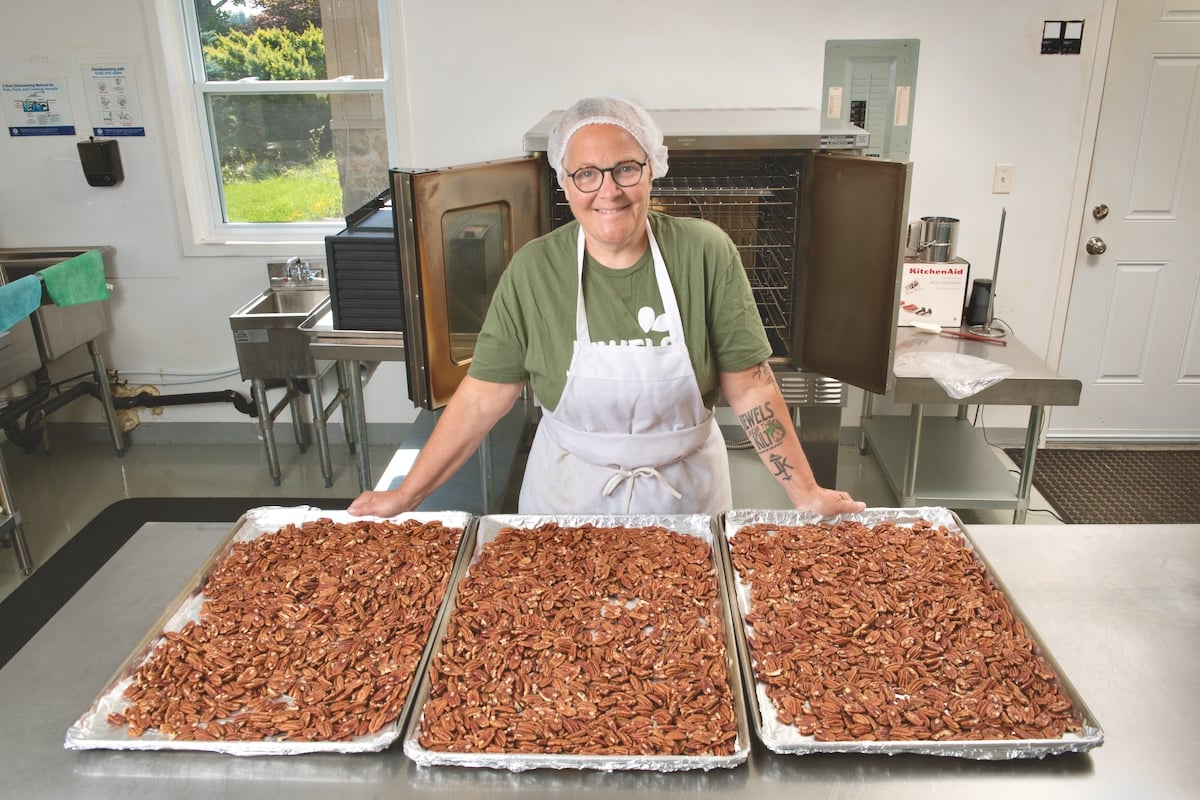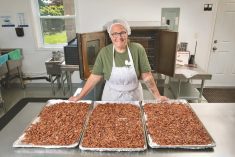It comes down to bucks per acre, say Luke Carnaghan (R.) and Steve Grove. Farming today has to be about increasing their income per acre instead of continually increasing their acres
It s a crisp mid-winter morning and
we re talking in the shop, but the discussion
isn t about commodity prices
and it isn t about the wildly exciting World
Junior Championship, or even about
Canada s unbelievable political upheaval.
Instead, Steve Grove and Luke
Carnaghan are talking about something
almost as unique and controversial
why they re not growing Roundup Ready
soybeans this year.
Read Also

Ontario nut farmer builds her business on hidden talent
Ontario nut farmer finds hidden talent and passion for helping others thrive.
Grove is owner of Spring Grove Agri
north of Oshawa, Ont. and Carnaghan is
his farm manager, and their philosophy
bucks the trend that s been seeing farmers
plant more and more acres of glyphosate-
tolerant crops.
Globally in 2007, 150 million acres
RR soybeans went into the ground, along
with 70 million acres of RR corn.
Here in Ontario, the 2008 acreage of
Roundup Ready corn increased while
soybean acres were stable. The latest figures
I have are 56 per cent Roundup
Ready corn and 60 per cent Roundup
Ready soybeans, says Peter Sikkema,
weed scientist at the University of
Guelph s Ridgetown campus. However,
I have also heard of 70 per cent RR corn
and 65 per cent RR soybeans.
When Roundup was first registered in
Canada about 35 years ago, the molecule
revolutionized weed control. In 1996
Roundup Ready crops became available,














